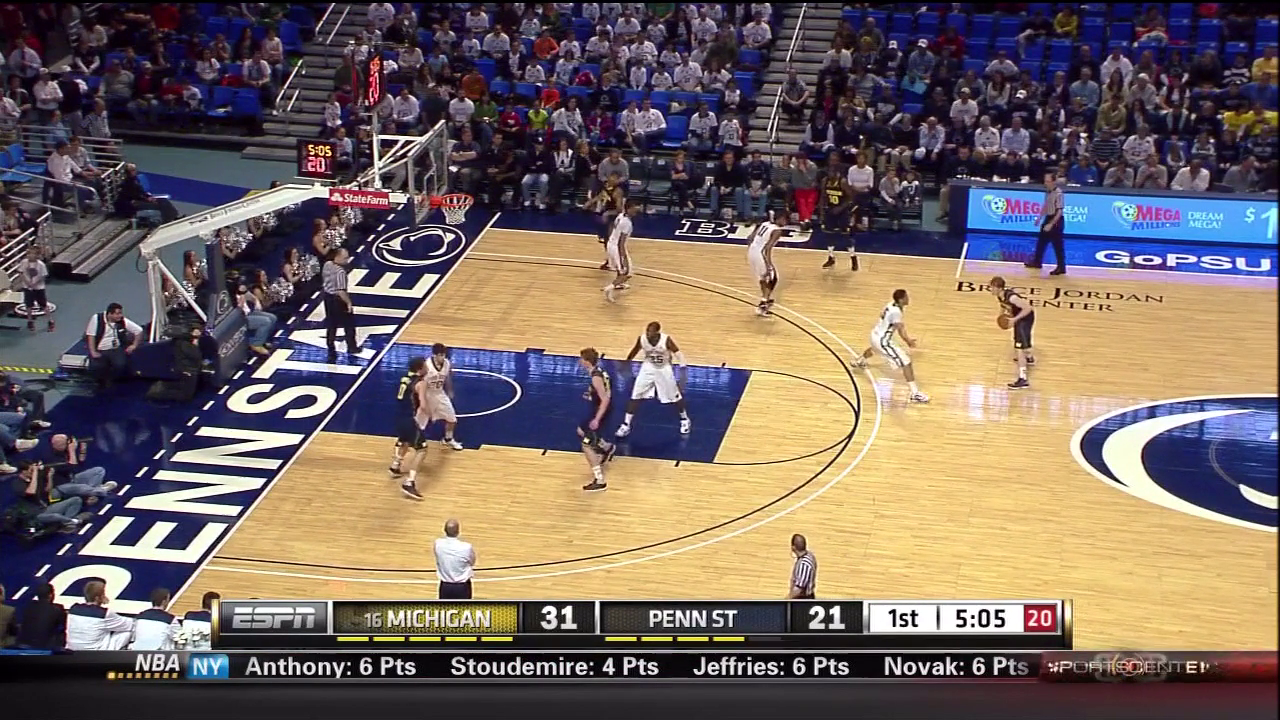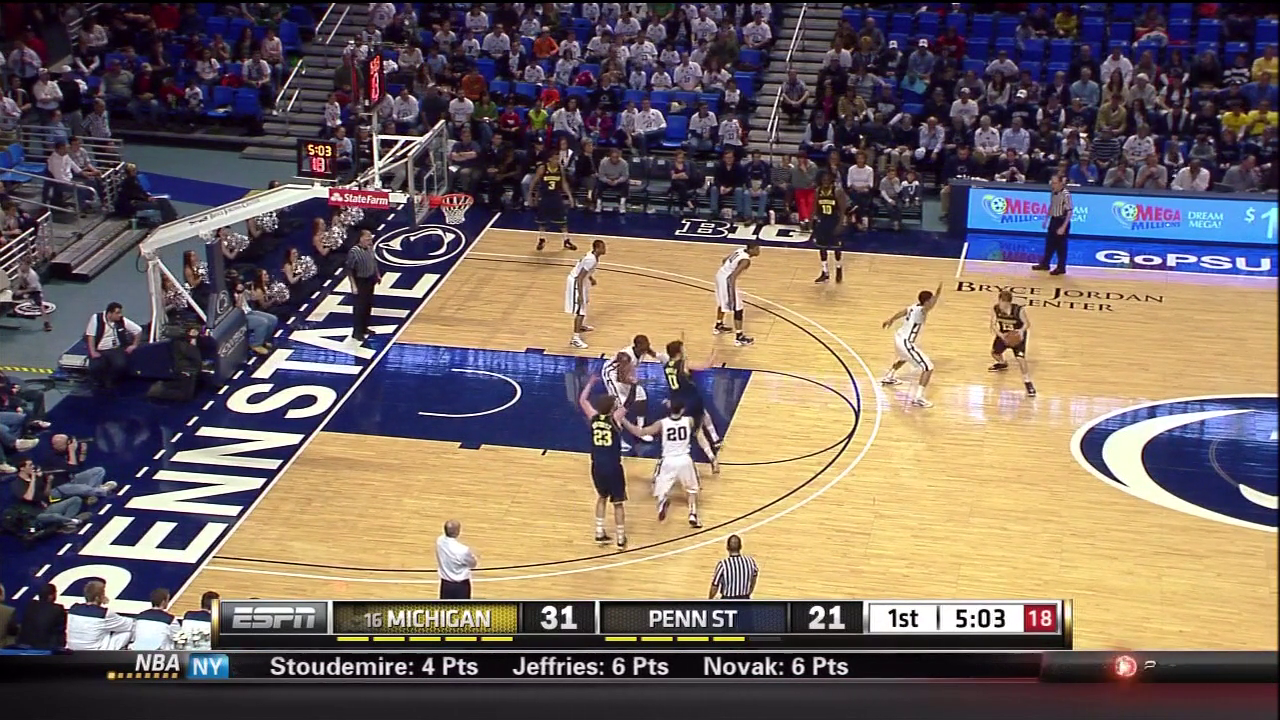consider the lobstrycz

It's no secret that Evan Smotrycz has struggled mightily for a large portion of the Big Ten schedule. In the four games leading up to Sunday's tilt against Penn State, Smotrycz had scored just 12 points in 64 minutes. Against the Nittany Lions, however, Smotrycz went off to the tune of 17 points on 6-7 shooting, including 3-4 from downtown.
With little depth up front and Tim Hardaway's production a major question mark, the Wolverines might have to rely of Smotrycz's secondary scoring to carry the team through the Big Ten and NCAA tournaments if they hope to survive and advance. After appearing to lose confidence in his shooting stroke in conference play, Smotrycz was assertive and productive against Penn State.
It should not come as a surprise that much of the credit must go to John Beilein and the coaching staff, who found several different ways to get the ball to Smotrycz in good shooting position. How did they do this? Let's go to the tape.
The first play I'll feature was also broken down by Dan Dakich—who I think is a great commentator, by the way—so I'm cheating a little bit here, but it's worth another look. The side pick-and-pop is one of the staples of Beilein's offense. It starts with Michigan resetting to their base 2-1-2 look, with Smotrycz manning the middle as the center:

In the frame above, you see Burke heading to the far corner after passing off to Hardaway, while Vogrich cycles up top. Below, you'll see that Novak has worked his way from the near corner to the edge of the paint, and Smotrycz has turned towards the basket to set a pick. Vogrich now has the ball at the top of the key; Michigan's spacing, as usual, is excellent. The Beilein offense is predicated on spreading the floor at all times, forcing the defense to extend to the perimeter.

Novak comes around Smotrycz's pick and curls into the lane, getting past his man and forcing Penn State's center—previously guarding Smotrycz—to stay at home. With Novak drawing two defenders inside, there's ample room for Smotrycz to pop out to the perimeter:

Vogrich delivers the pass, and Smotrycz's man is in no position to get out and properly contest. Smotrycz will fire away and knock down the triple:

Here's the full video of the play:
This is a very simple concept, but when executed properly it's tough to defend—there's a reason Beilein loves big men who can shoot. With Smotrycz at the five, he produces major matchup issues on the offensive end. In this case, a lumbering center is forced to make a very athletic defensive play to prevent an open layup by Novak on the curl-cut, then get out to Smotrycz on the pop; he's incapable of doing so, and Michigan gets an open three. If Penn State's defenders stick with their men, they'll likely give up an easy two points to Novak. If they switch—not easy on the fly, though probably the best way to defend this play—Michigan will at least have created a couple of mismatches on the floor.
When Smotrycz plays at the four, he's able to get screens of his own away from the ball. In this next clip, watch the two-man game with him and Jordan Morgan on the far side. Smotrycz first cuts from the corner to the basket, briefly drawing two defenders, then gets a screen from Morgan as he heads to the perimeter. He gets the ball on the wing and, with his defender still scrambling to get outside, is able to take a couple of dribbles towards the paint, then smartly pull up for a short jumper:
That shot is easy money for Smotrycz, but Morgan's man can't fully commit to contesting without potentially giving up an open dunk to Morgan. Caught in no man's land, he's forced to concede a 10-footer; it's a nice play by Smotrycz to recognize this and pull up instead of trying to take it all the way to the basket.
Finally, you have your standard pick-and-roll. With opponents often hedging hard on Trey Burke—one of the few ways teams have found to slow him down—it's imperative that the screener knows when it's time to dive to the basket. On this play, Smotrycz times it perfectly, slipping the screen a little early to give Burke enough space to pass before the hard double is fully there. The result? An easy layup:
Beilein's offense is regarded as quite complex, and with the wide array of plays involving intricate off-ball movement I'm not one to argue. However, that doesn't mean there aren't some very basic concepts that produce much of the offense, and most of the stuff above—especially the pick-and-roll or pick-and-pop—isn't difficult to spot even for a novice fan. Much like with football, fully appreciating the minutiae of Michigan's offense involves taking your eyes off the ball. For a player like Smotrycz, especially, most of his shots are going to be created when the ball isn't in his hands.
10